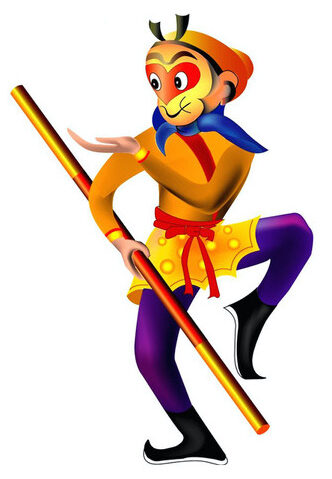Class trip to Pt. Reyes, and the creation of our Dioramas
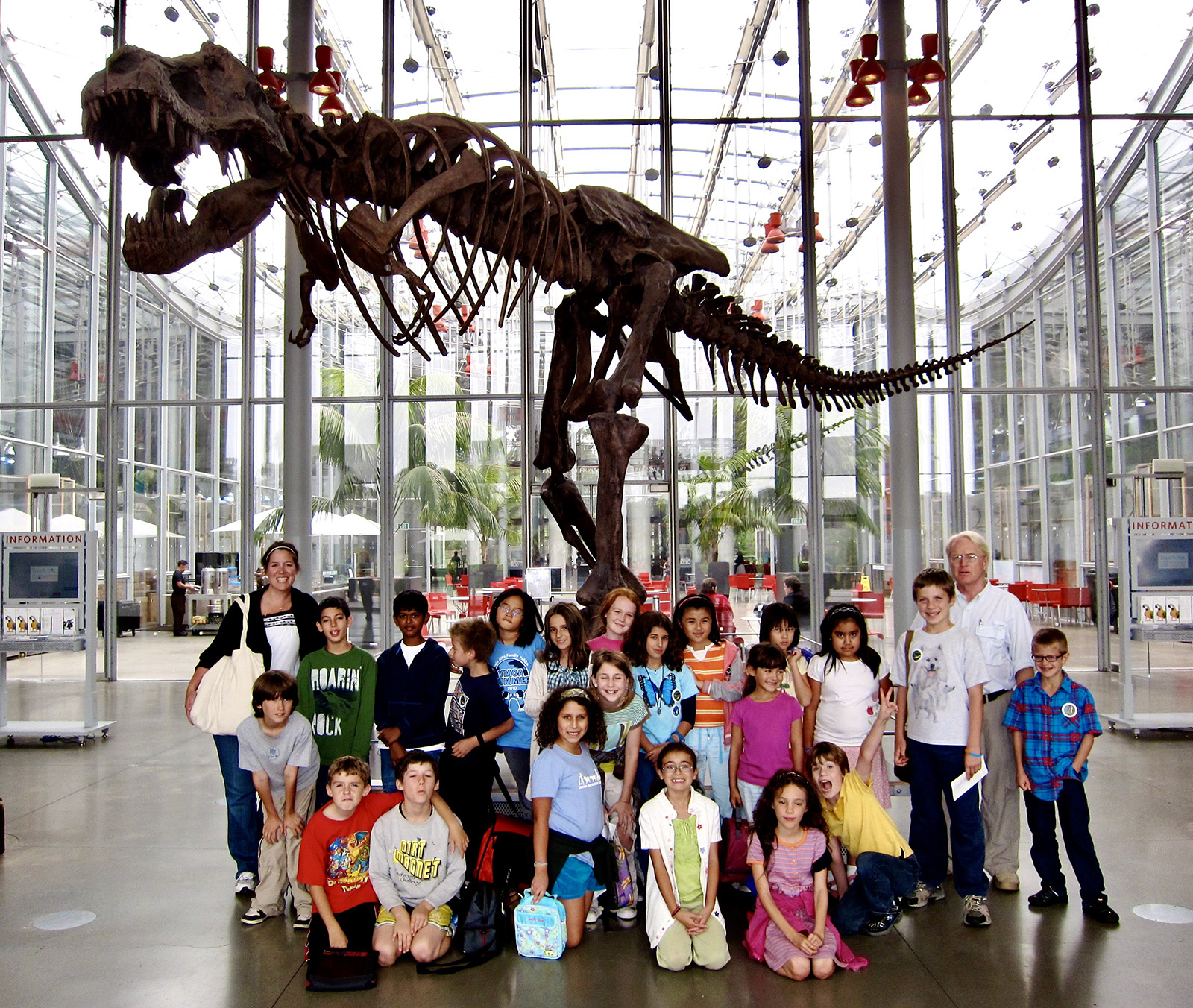 We often begin with a field trip to the California Academy of Sciences, sometimes with directed lab, to let students see how to use text and graphics to share information based on research…
We often begin with a field trip to the California Academy of Sciences, sometimes with directed lab, to let students see how to use text and graphics to share information based on research…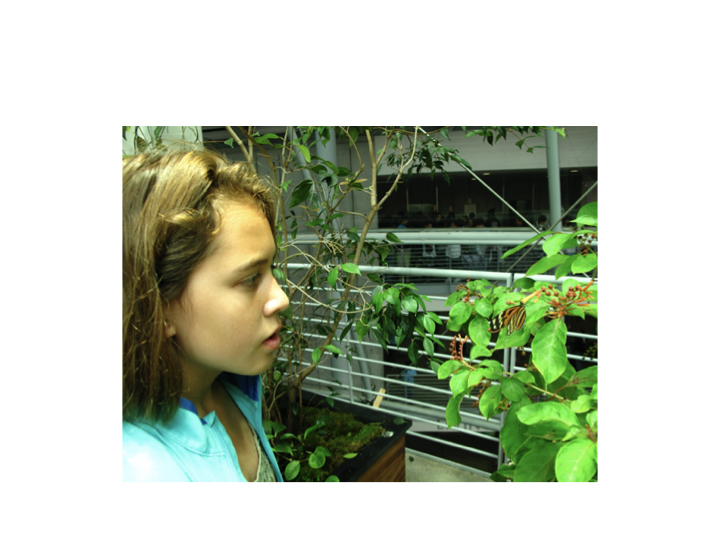 …and observation.
…and observation.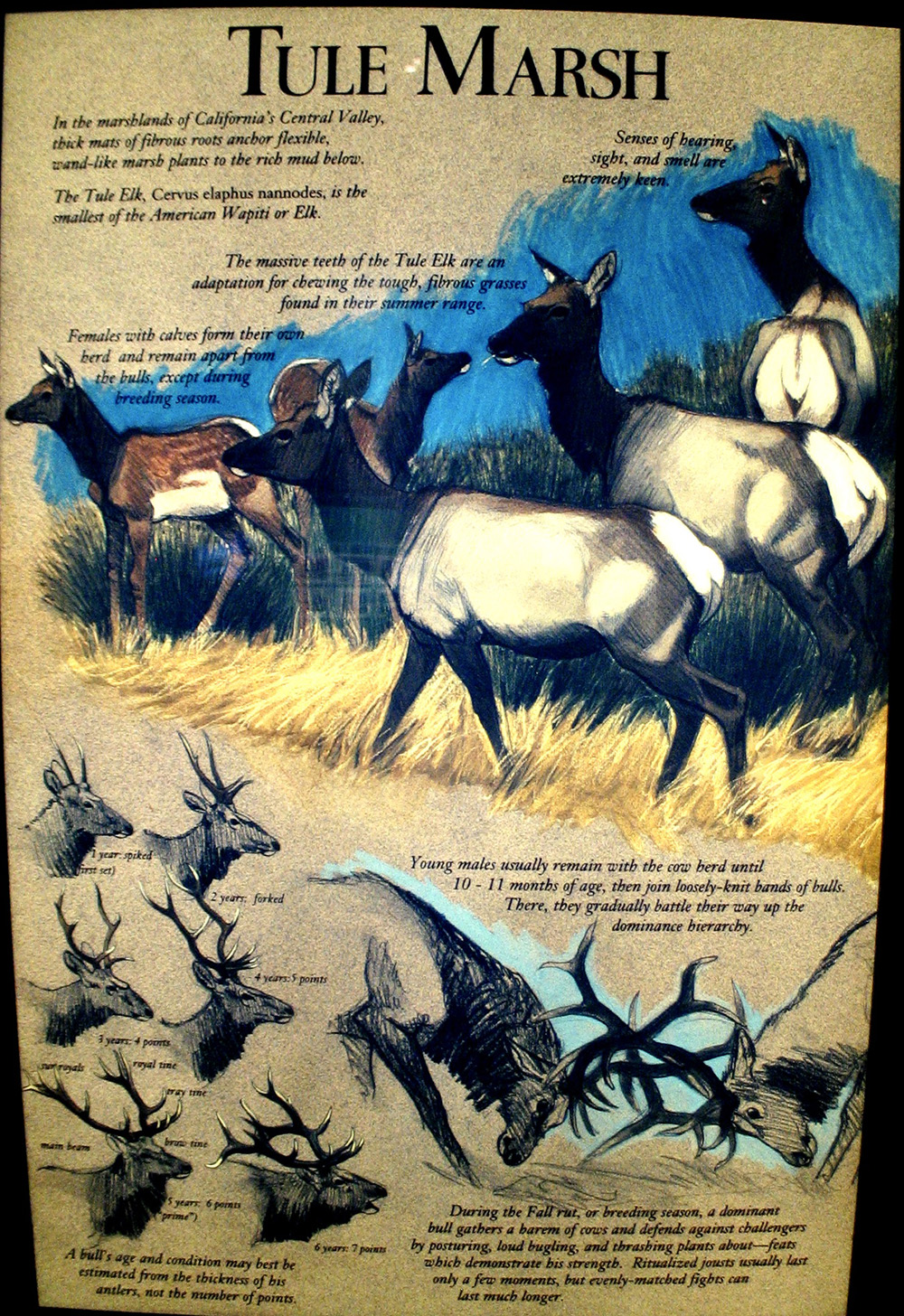 Many years ago, the Academy had a series of dioramas with explanatory posters based on habitats of California.
Many years ago, the Academy had a series of dioramas with explanatory posters based on habitats of California.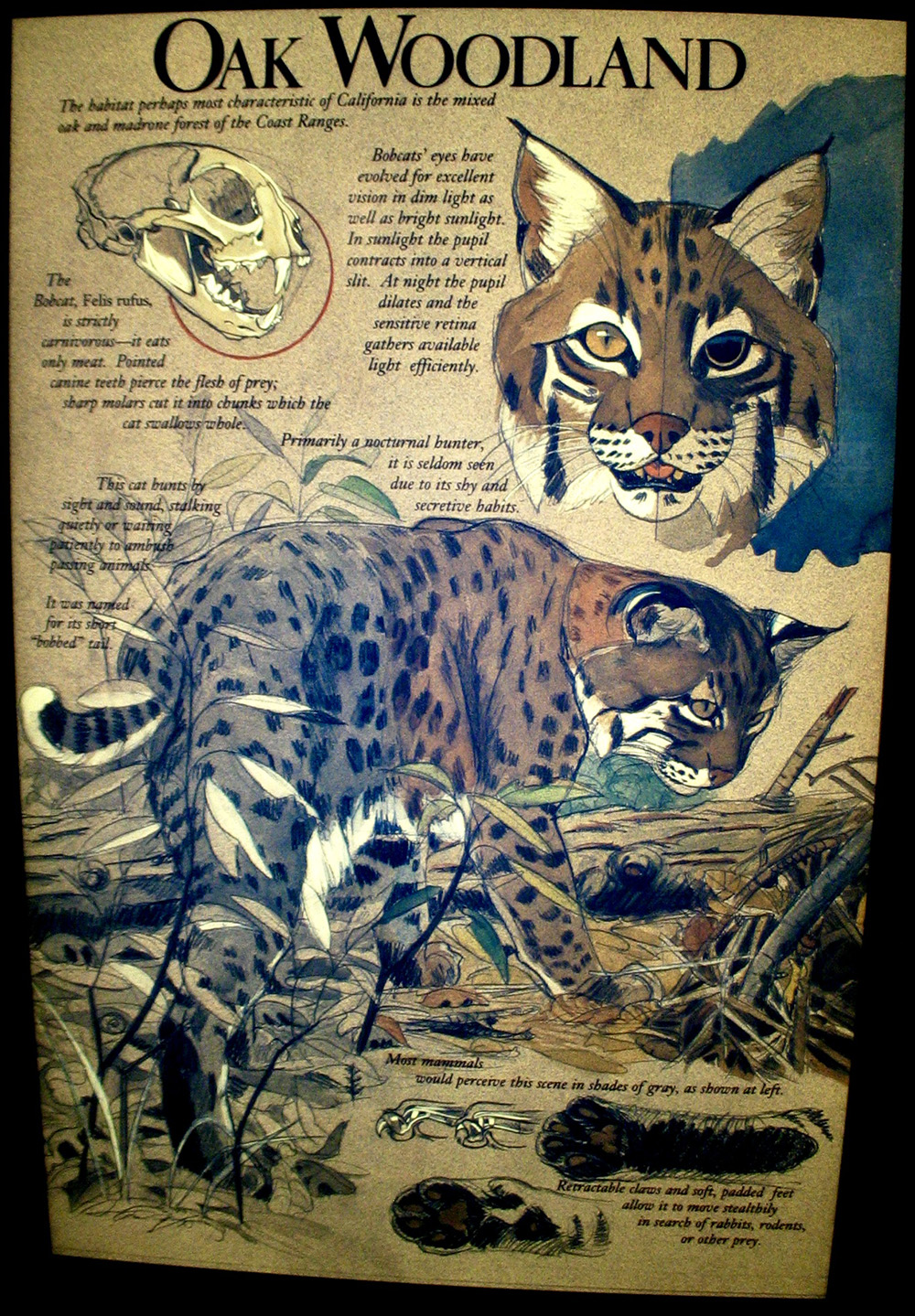 Hence the name: Wild California.
Hence the name: Wild California.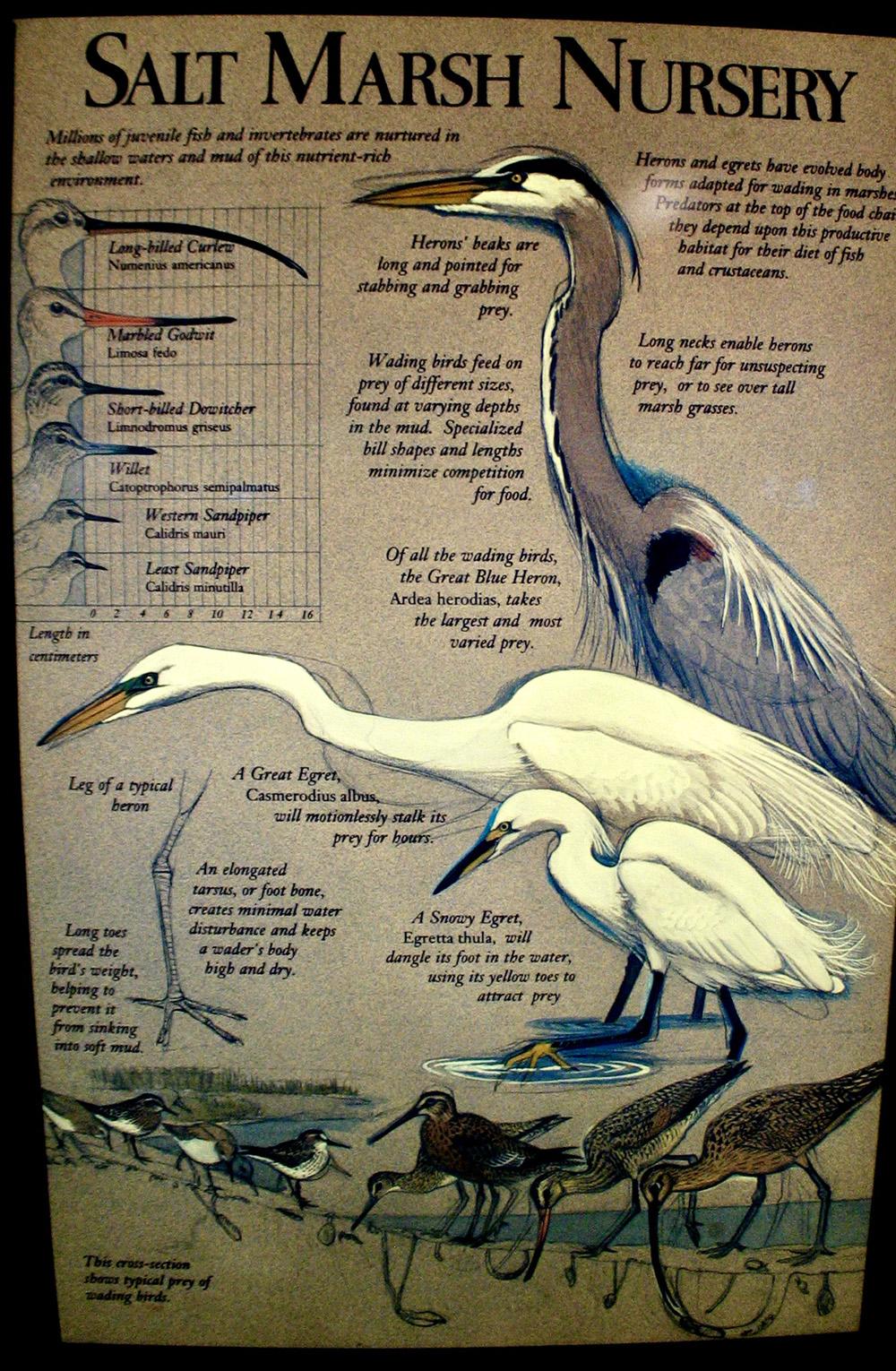 After a workshop where teachers created their own model and poster in an afternoon, creating dioramas in the classroom became a real goal.
After a workshop where teachers created their own model and poster in an afternoon, creating dioramas in the classroom became a real goal.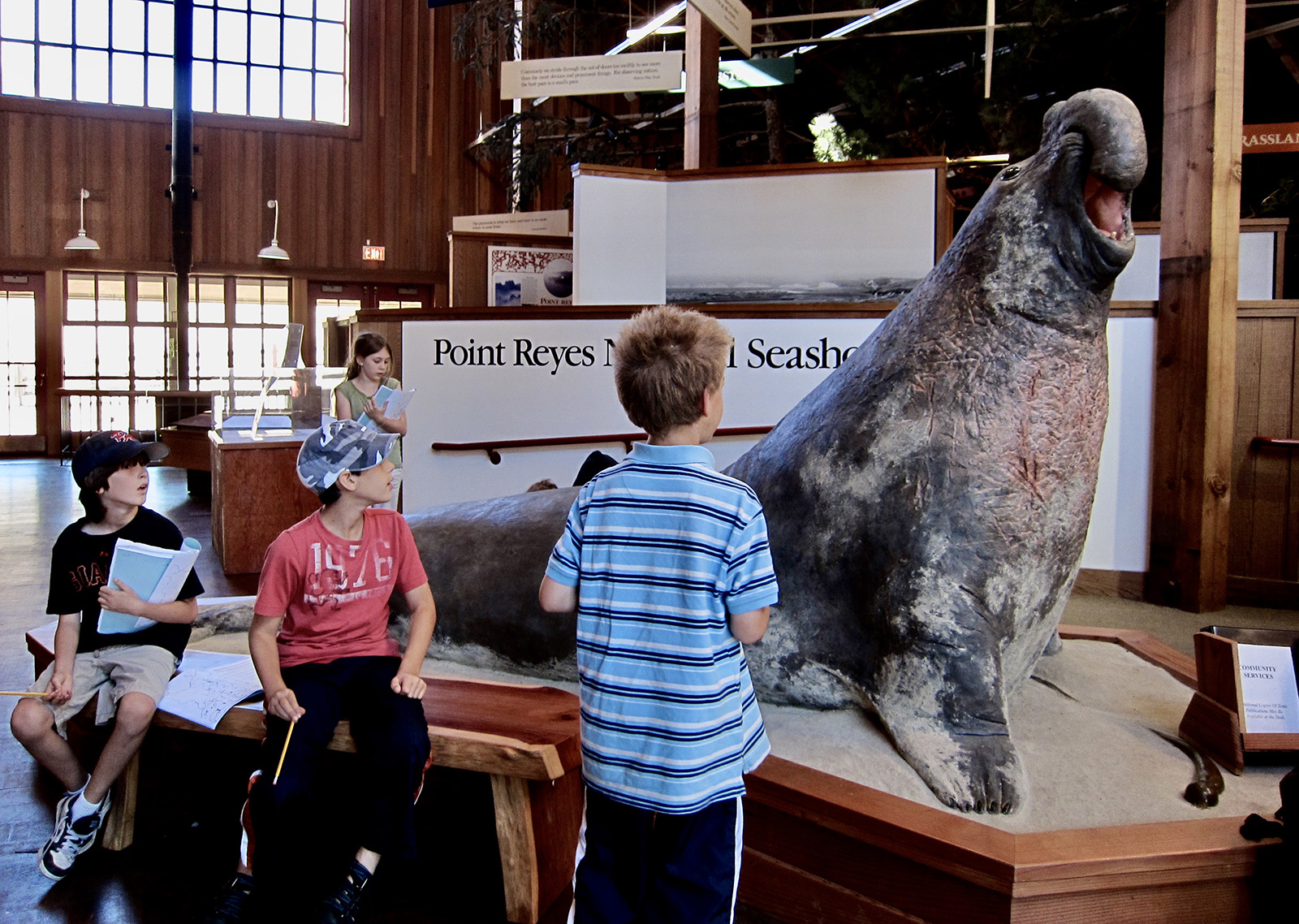 Some of the models still exist at the Point Reyes National Seashore Visitor Center.
Some of the models still exist at the Point Reyes National Seashore Visitor Center.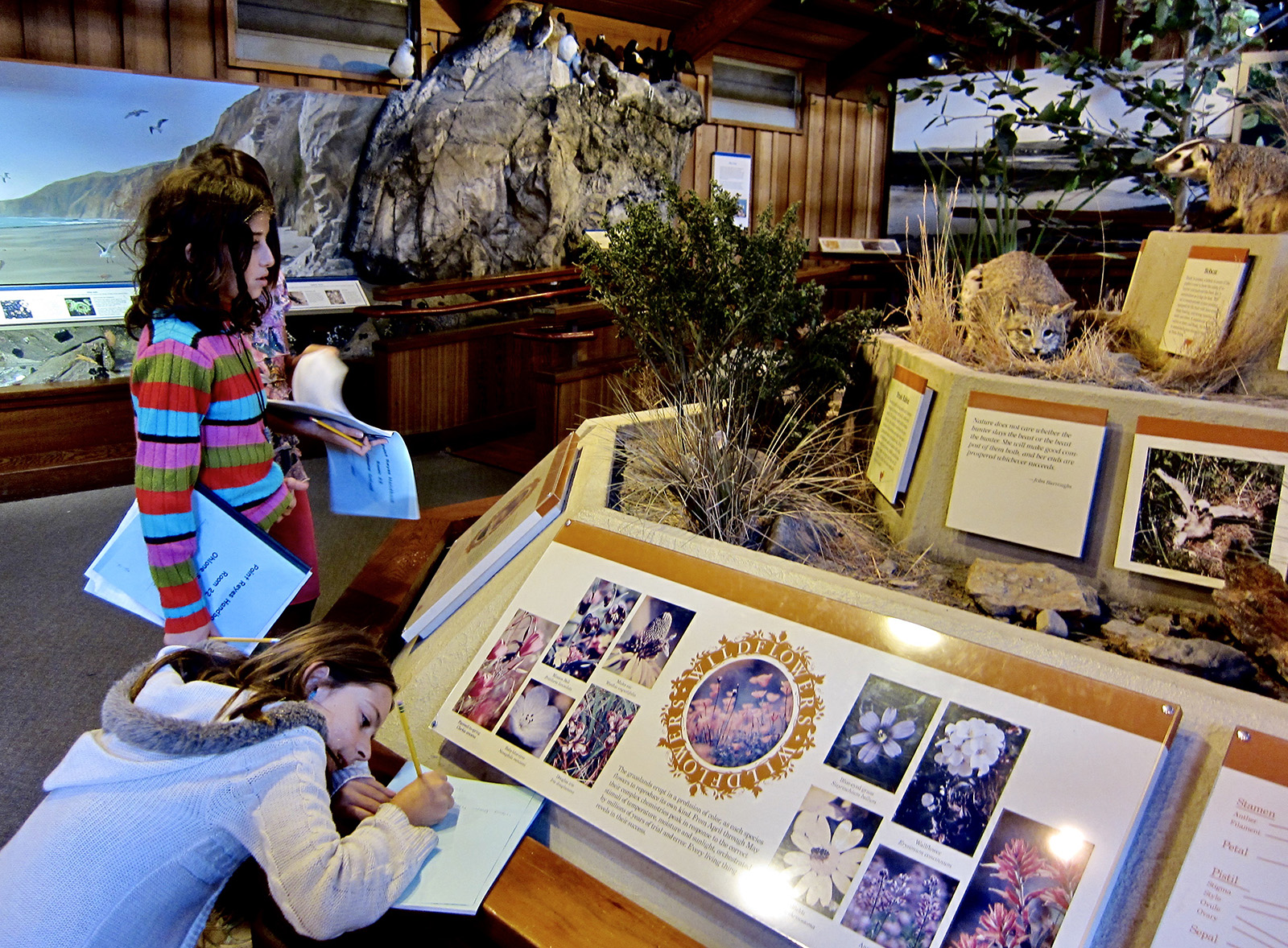 7. Students observe, sketch, take notes on animals in their habitat.
7. Students observe, sketch, take notes on animals in their habitat. A prime opportunity to spend 3 or 4 days and have school outside exists at the Point Reyes Education Center. Parents and teachers work together to keep students safe, well fed, and active.
A prime opportunity to spend 3 or 4 days and have school outside exists at the Point Reyes Education Center. Parents and teachers work together to keep students safe, well fed, and active.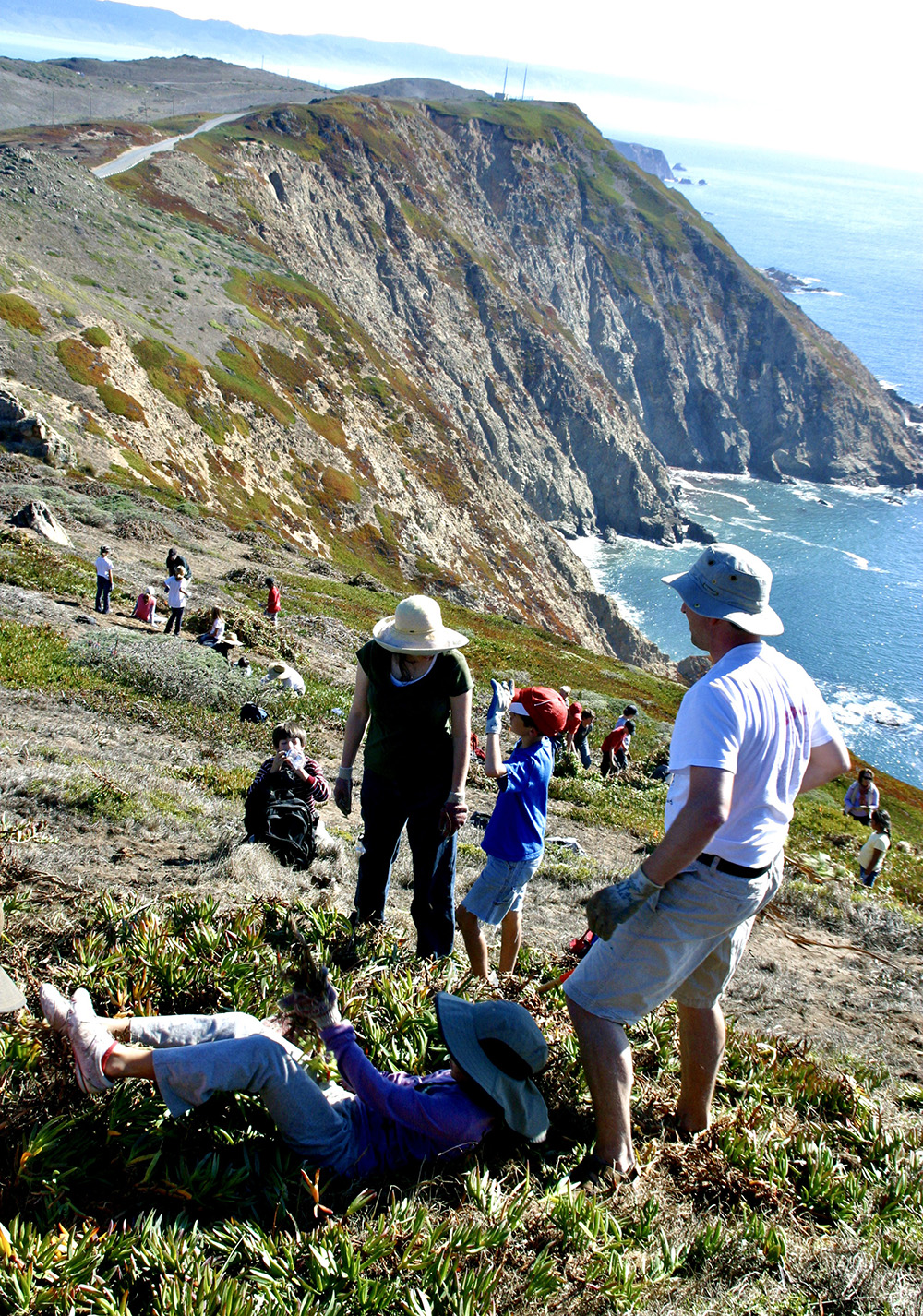 We often engage in habitat restoration or beach clean-up.
We often engage in habitat restoration or beach clean-up.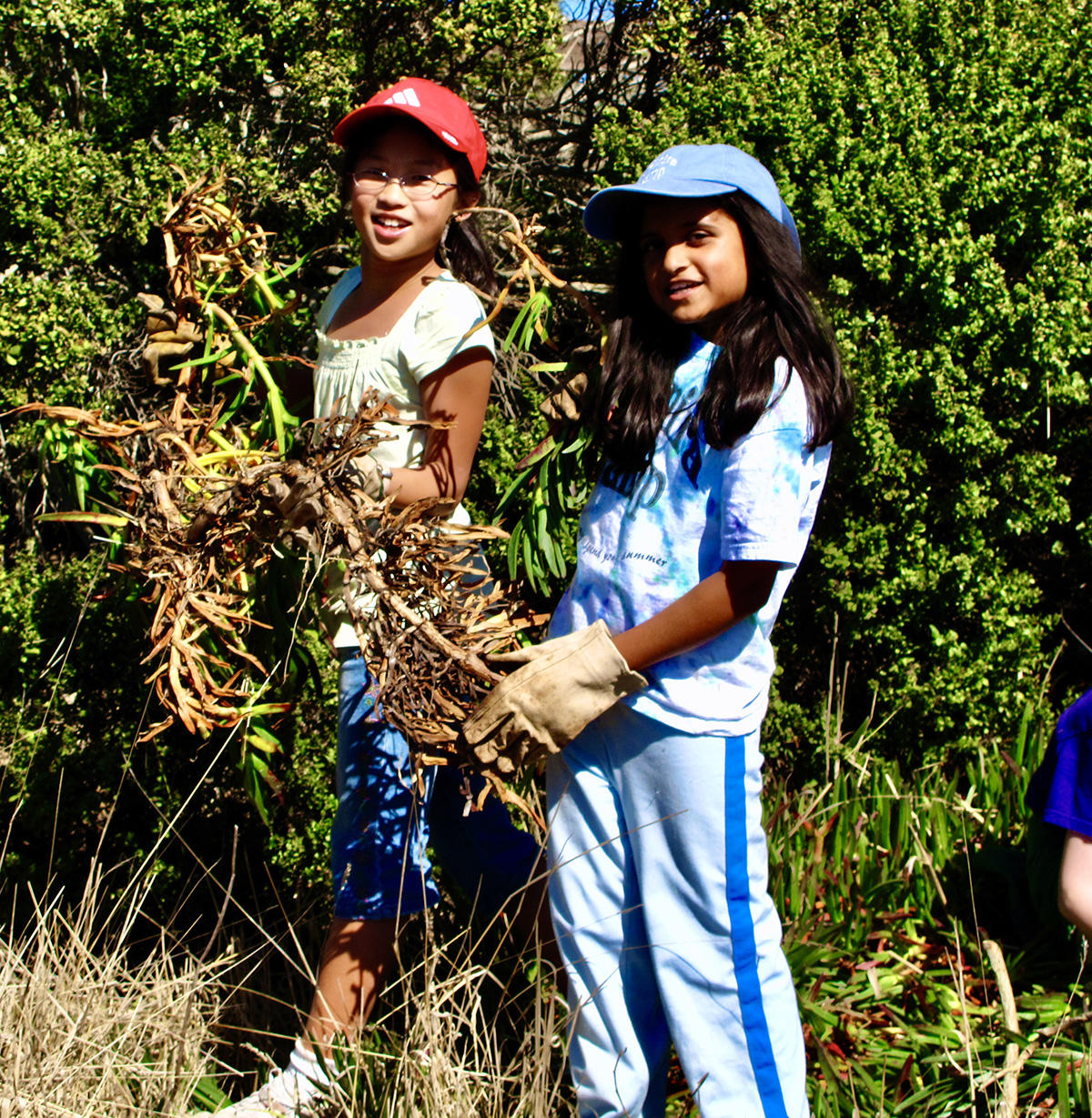 Ice plant leftover from projected residential development prior to National Seashore designation must be removed to allow native plants to flourish
Ice plant leftover from projected residential development prior to National Seashore designation must be removed to allow native plants to flourish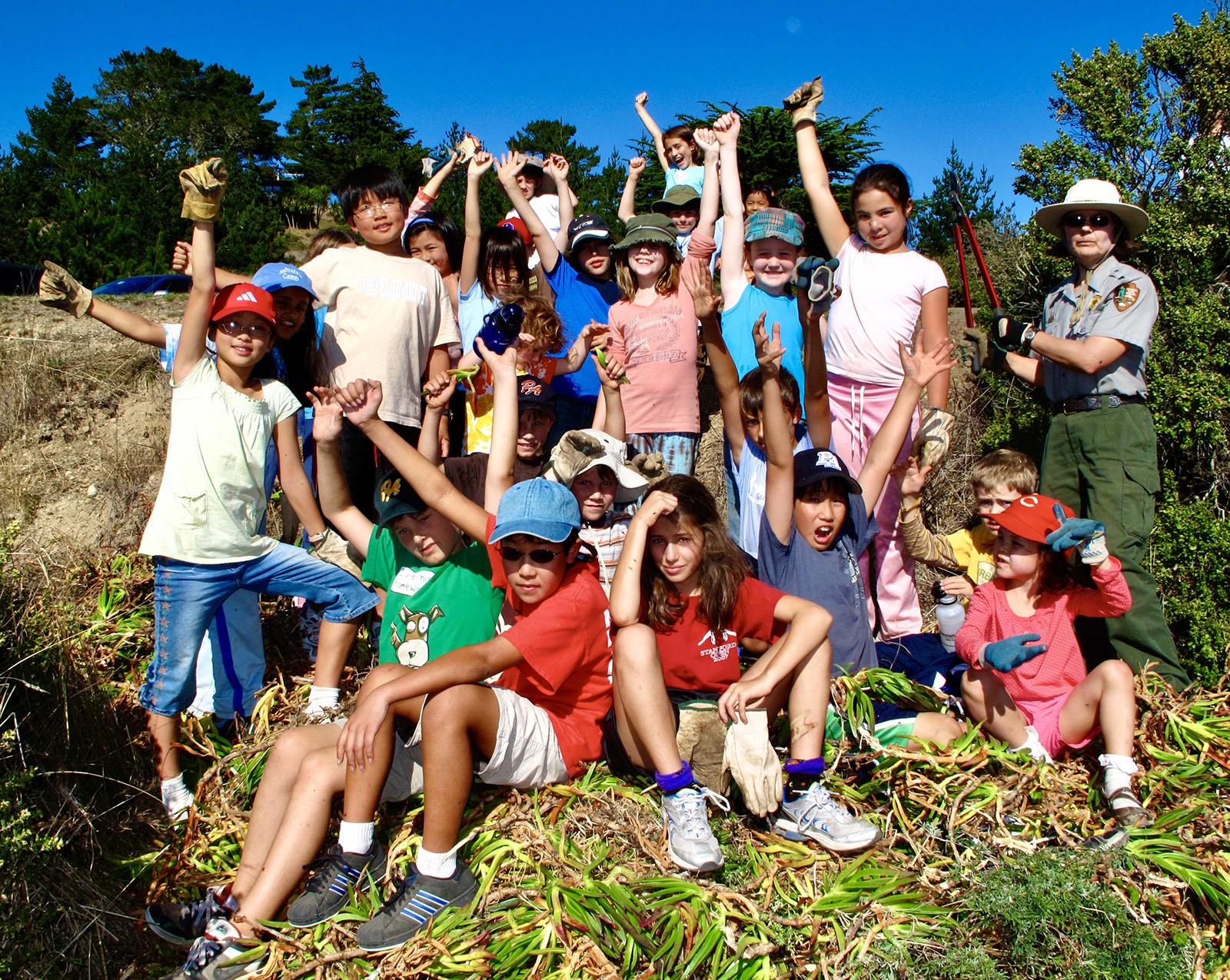
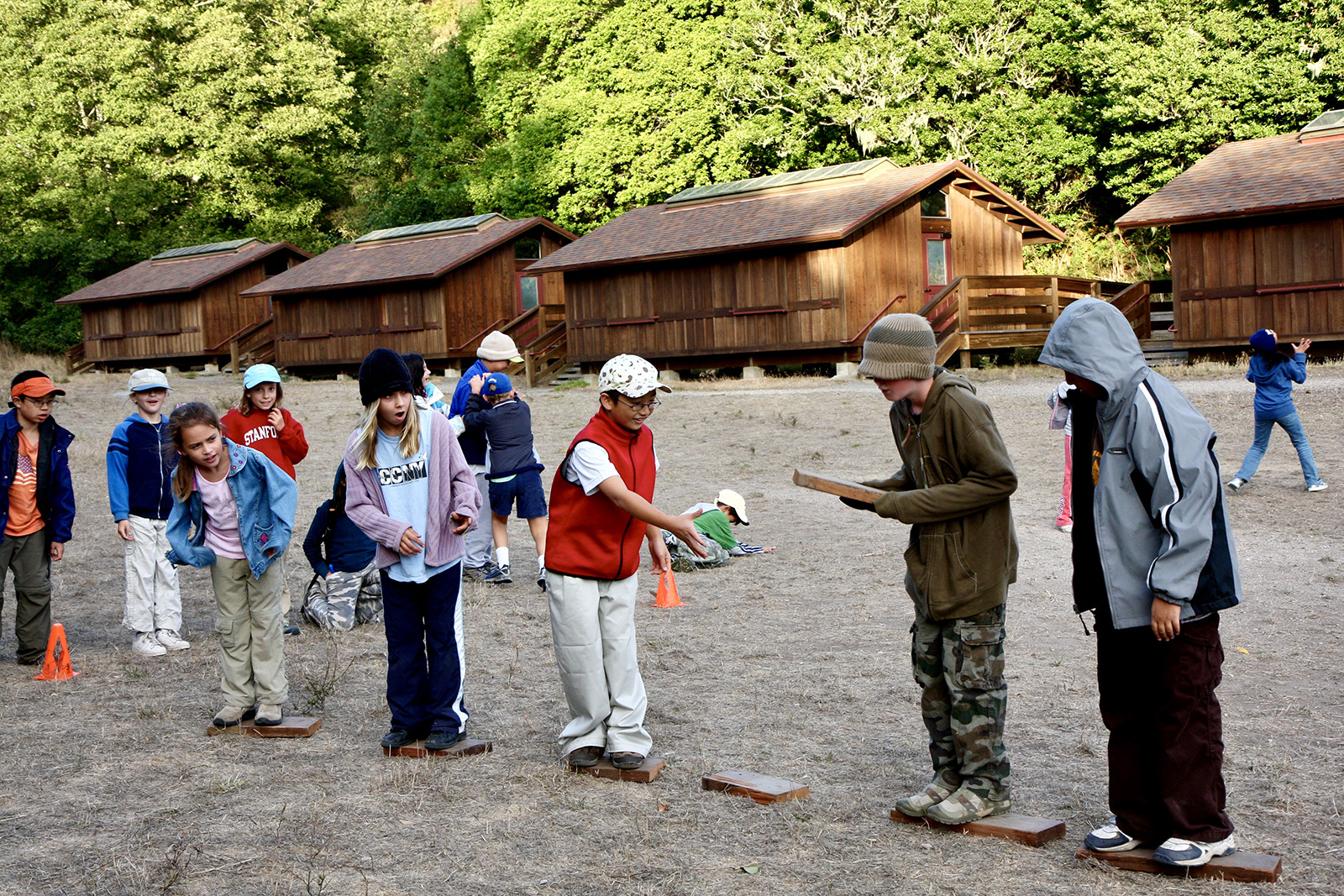 Students are given group challenges that can only be accomplished through cooperation.
Students are given group challenges that can only be accomplished through cooperation.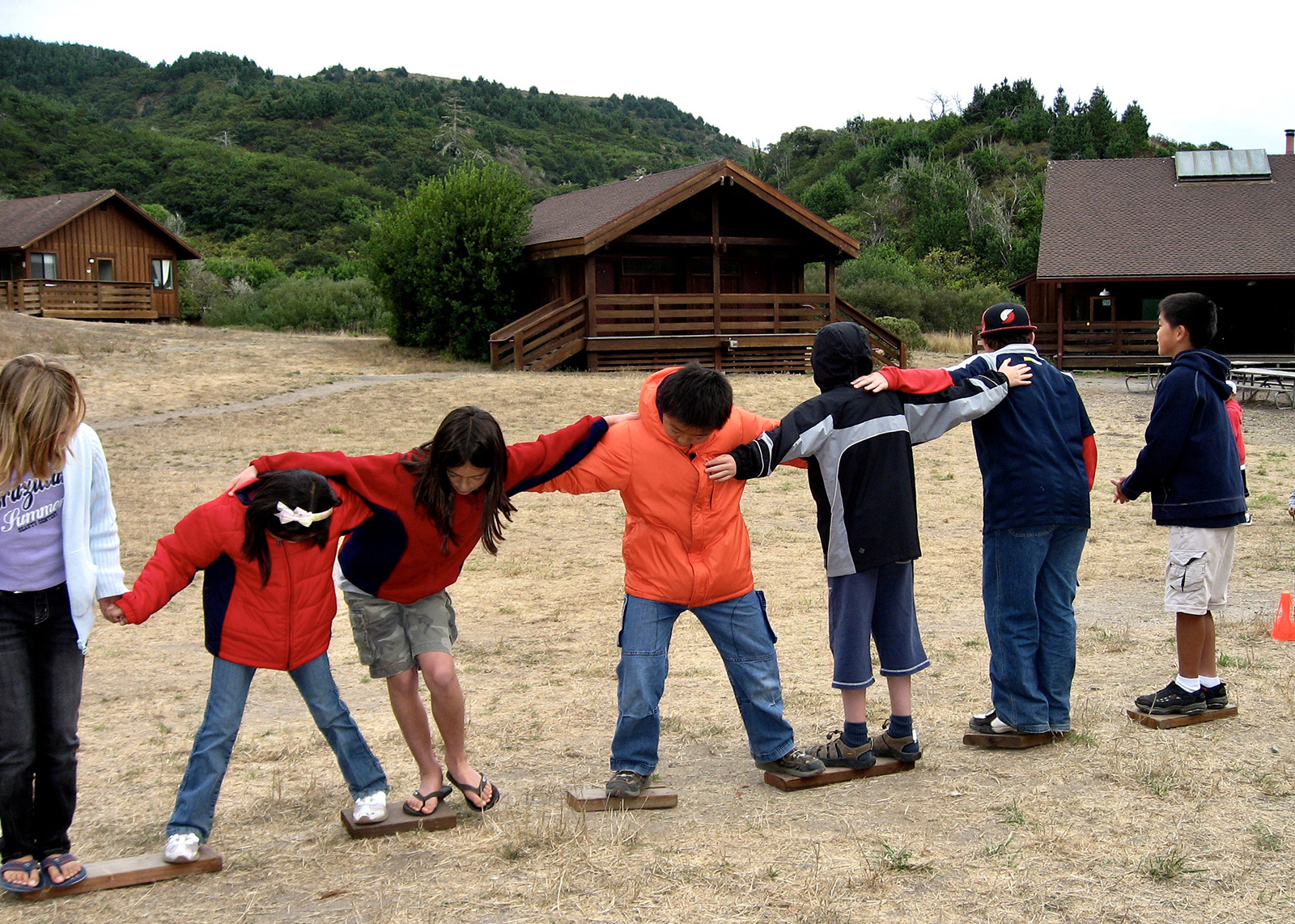 Students are given group challenges that can only be accomplished through cooperation.
Students are given group challenges that can only be accomplished through cooperation.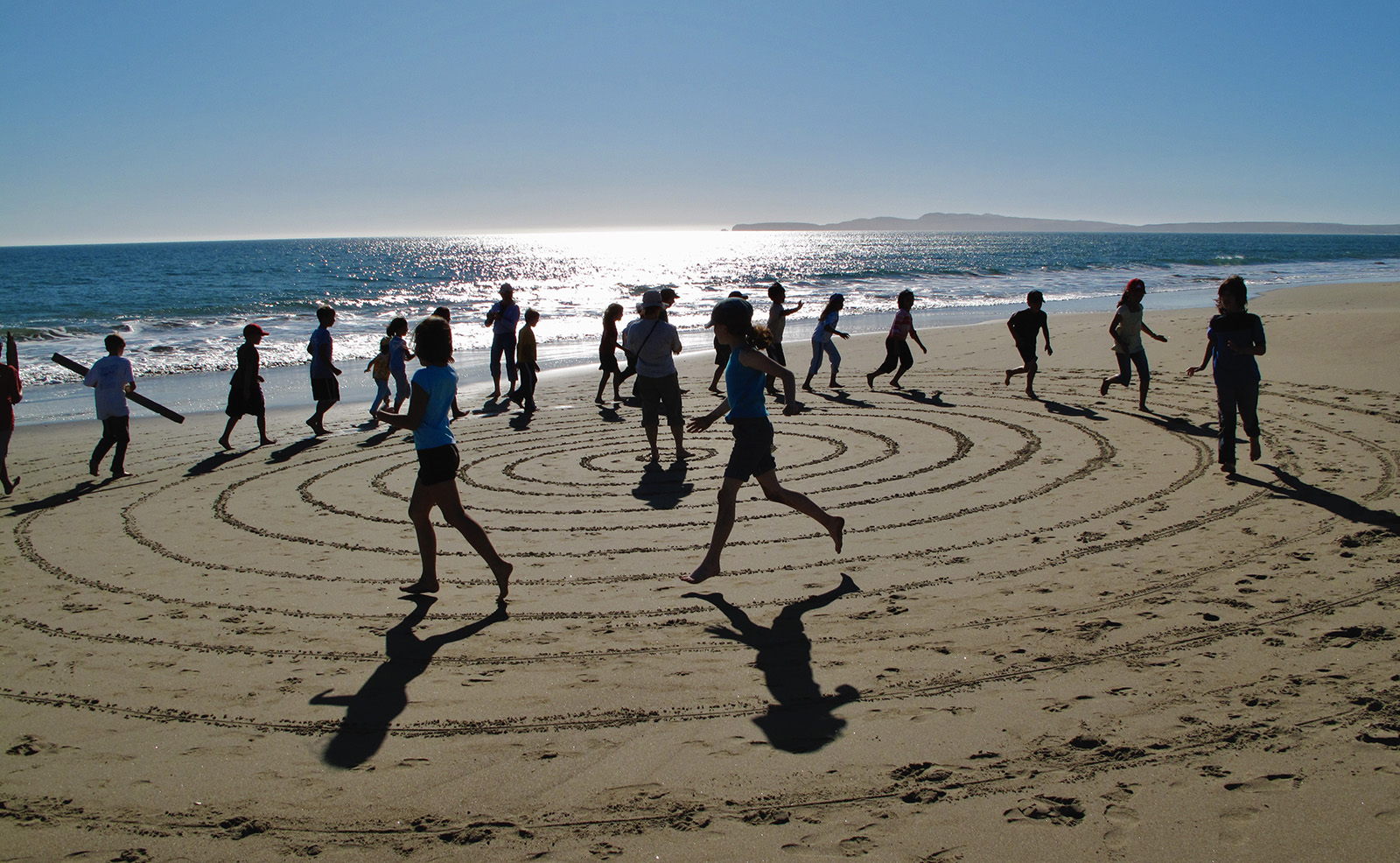 Invented games.
Invented games.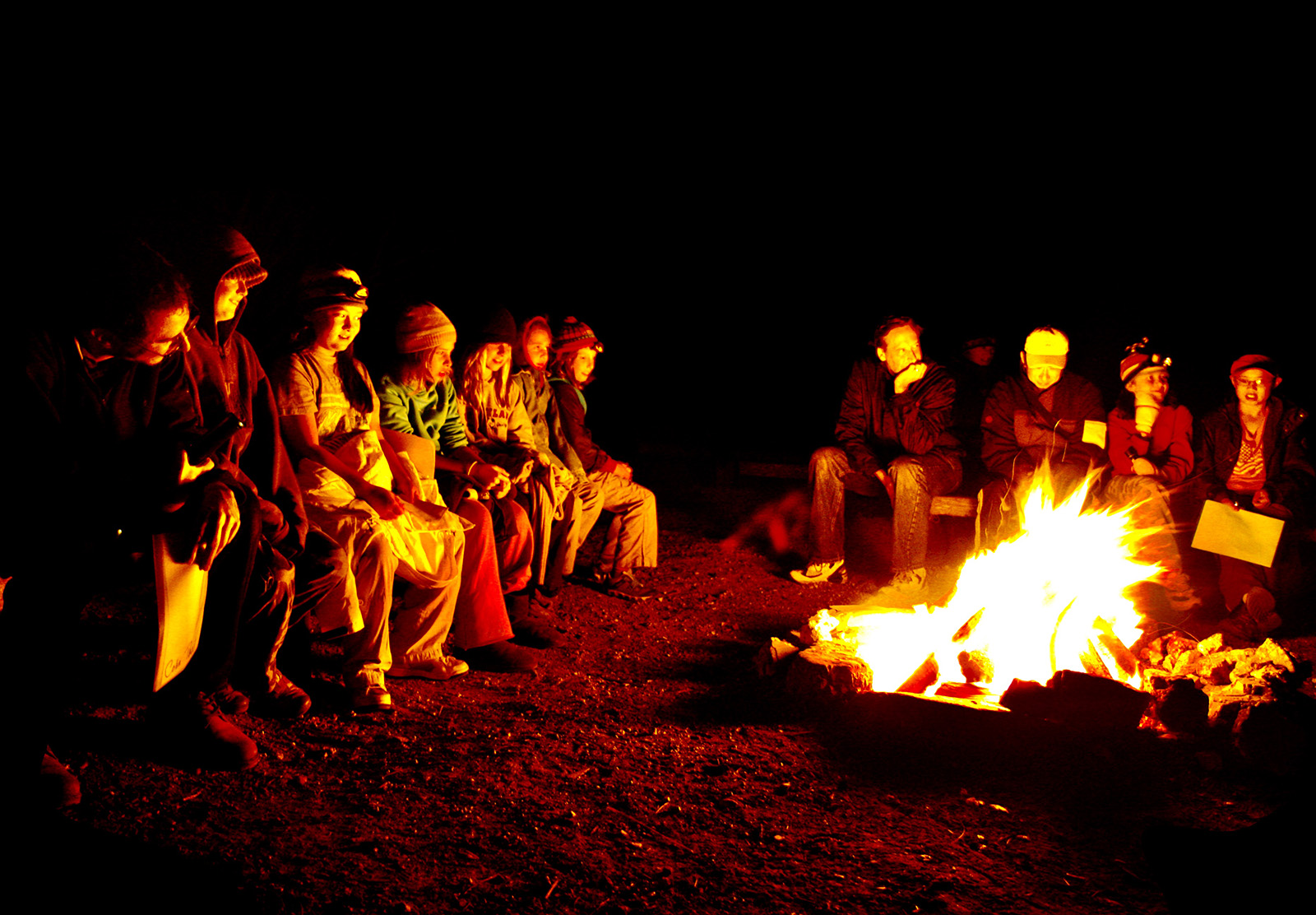 We entertain each other with campfire stories written by students specifically for this occasion. All students participate.
We entertain each other with campfire stories written by students specifically for this occasion. All students participate.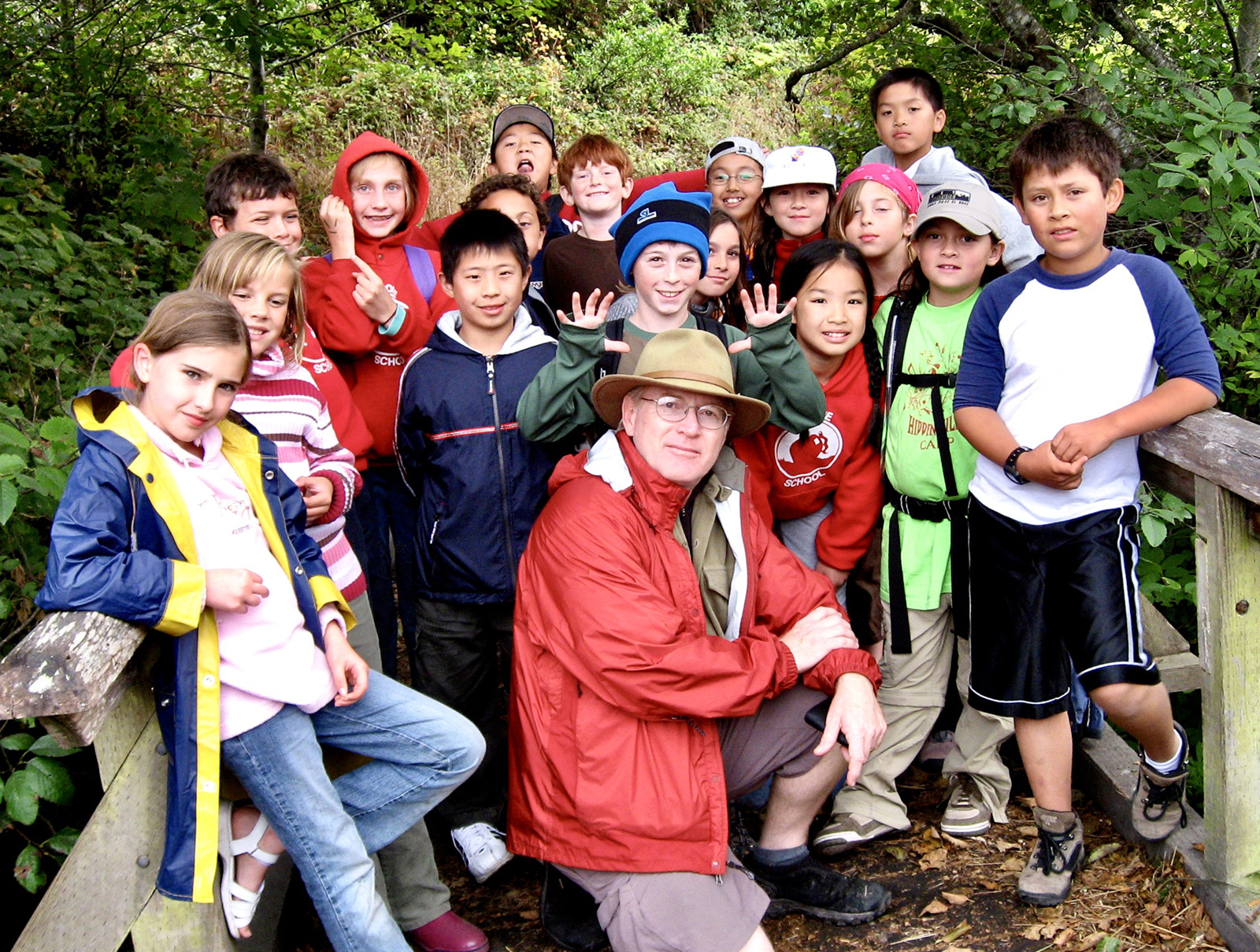 The experience at Point Reyes is the most referenced memory of former students over a twenty-four year period of teaching.
The experience at Point Reyes is the most referenced memory of former students over a twenty-four year period of teaching.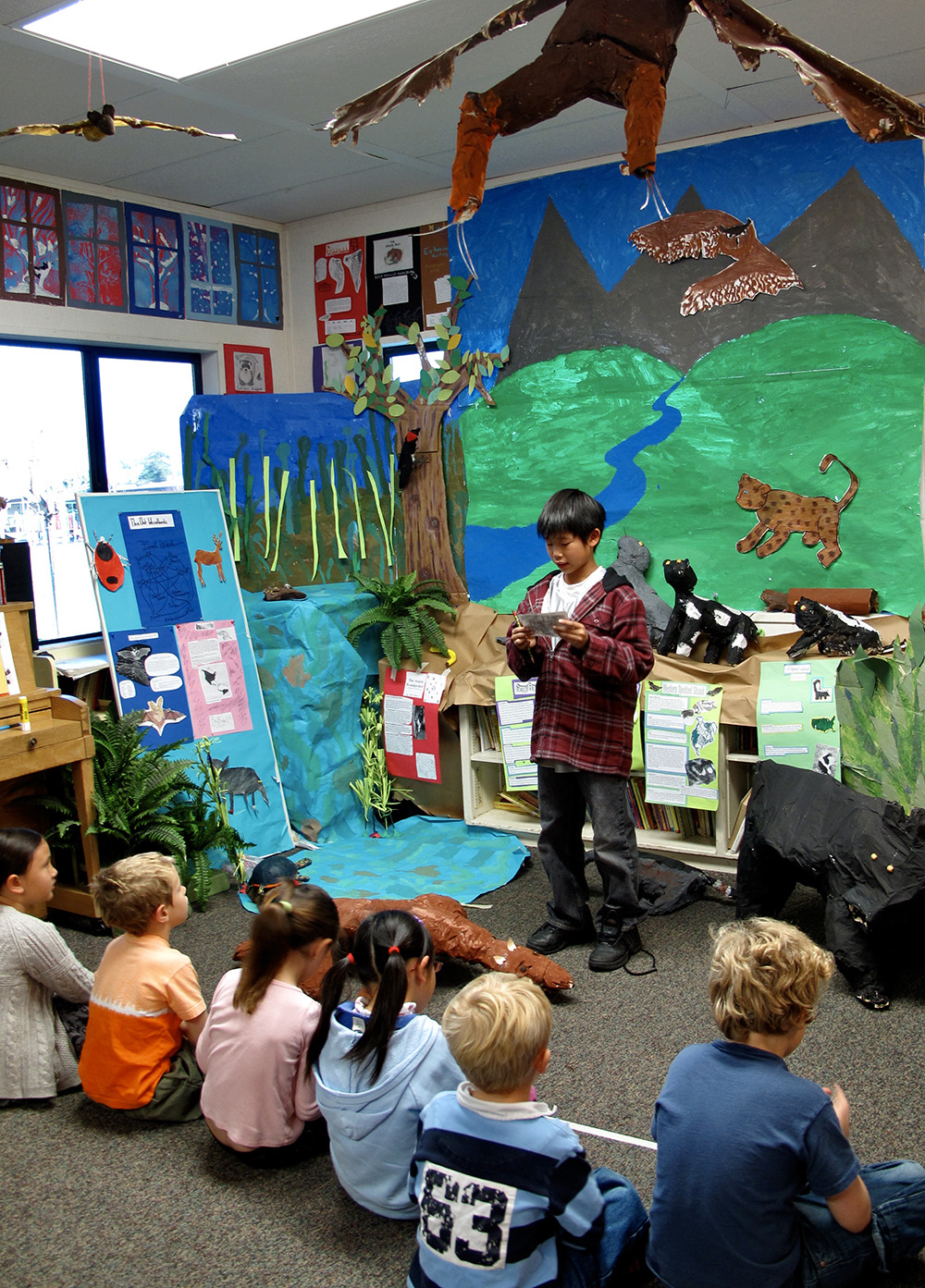 When we return to school, we take about a month to research animals and plants in the habitats we just visited. We work with the district art teacher to create models (mostly papier-mâché) of animals and plants, habitat backgrounds, and explanatory posters.
When we return to school, we take about a month to research animals and plants in the habitats we just visited. We work with the district art teacher to create models (mostly papier-mâché) of animals and plants, habitat backgrounds, and explanatory posters.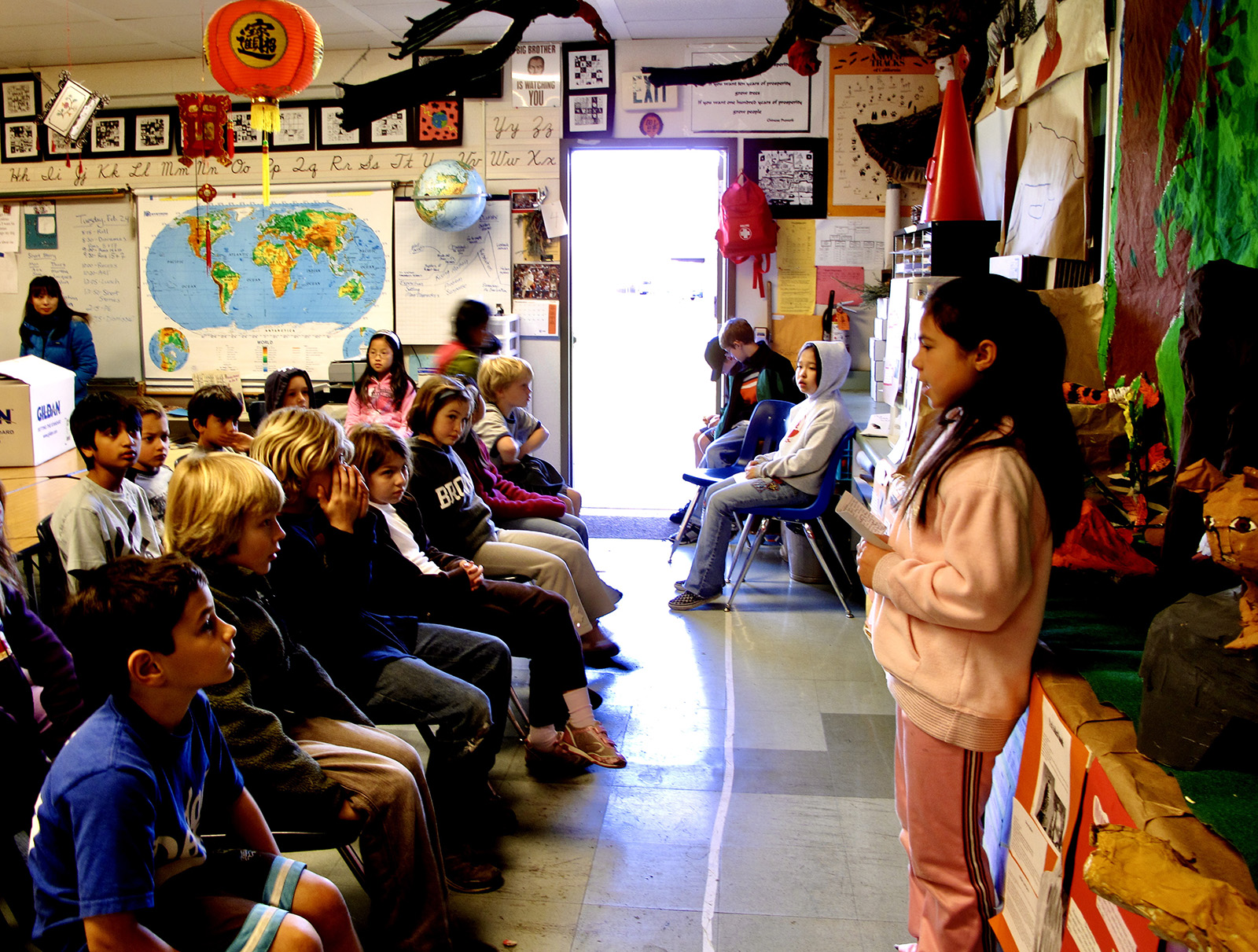 Other classrooms are invited to hear students give docent presentations of their research.
Other classrooms are invited to hear students give docent presentations of their research.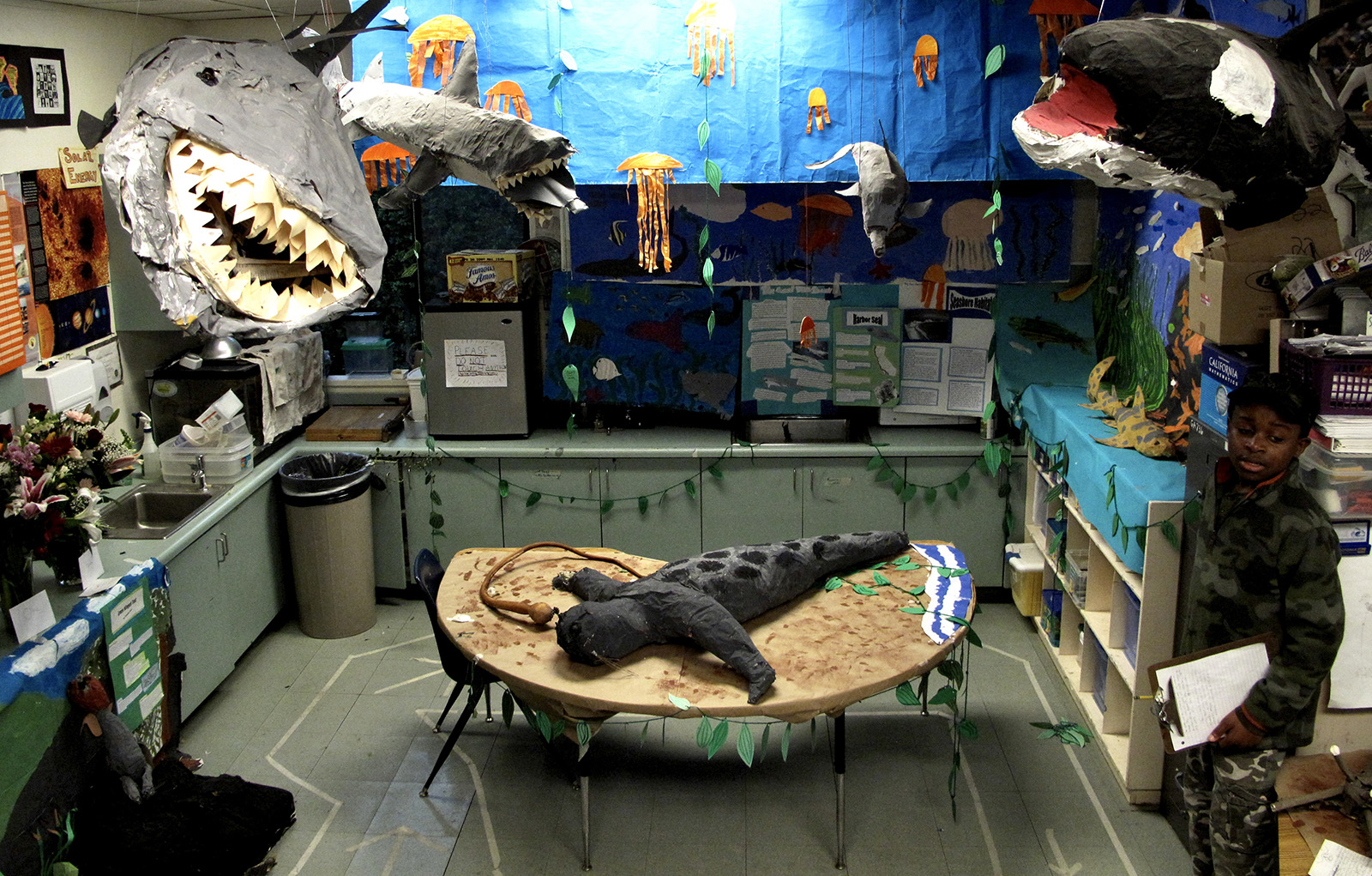 Dioramas take up considerable space, but also demonstrate a classroom commitment to a common enterprise.
Dioramas take up considerable space, but also demonstrate a classroom commitment to a common enterprise.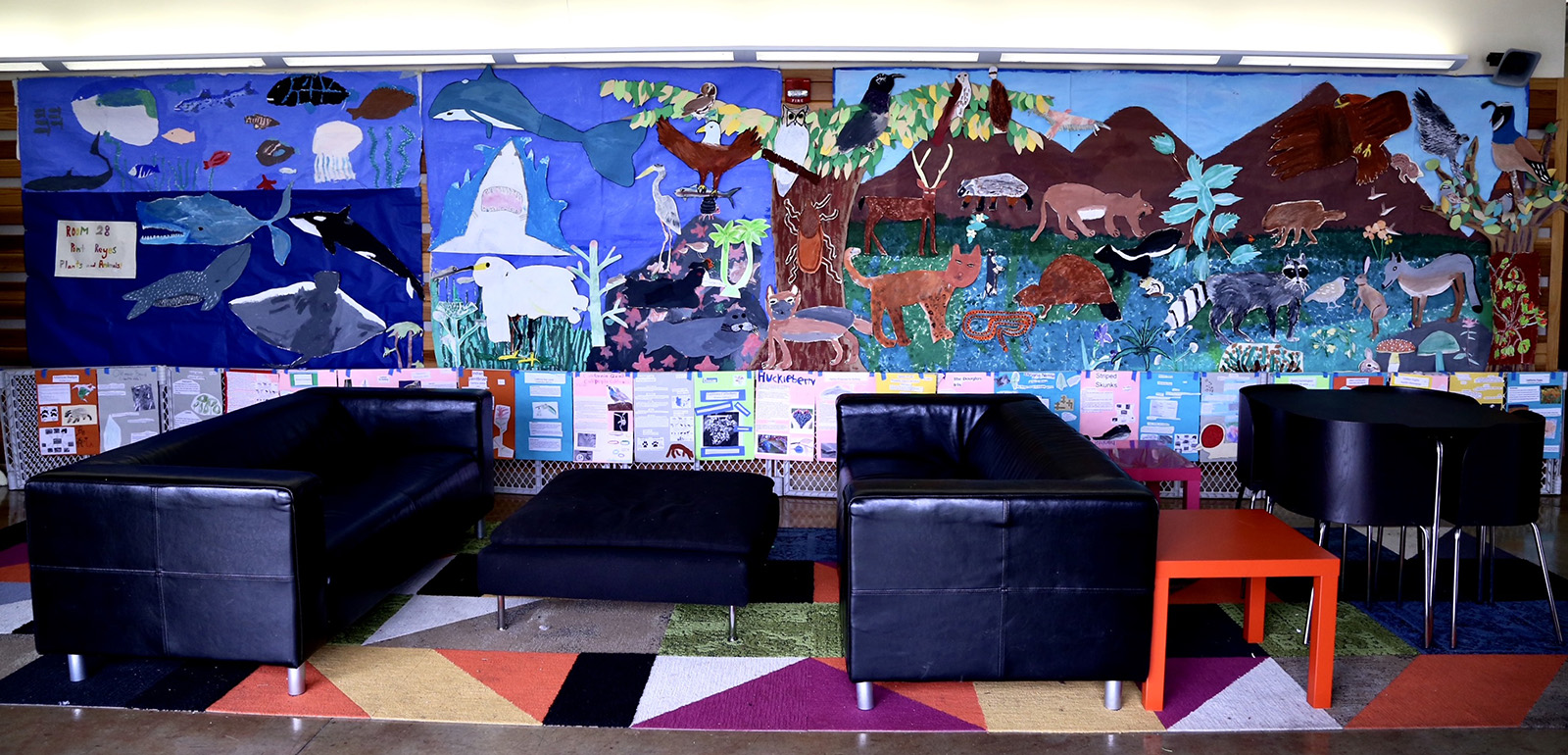 Moving to a new building meant much less space in the classroom. We lost our ability to construct 3-D dioramas. We moved to a large common space, the lobby of the building, and pivoted to a mural presentation.
Moving to a new building meant much less space in the classroom. We lost our ability to construct 3-D dioramas. We moved to a large common space, the lobby of the building, and pivoted to a mural presentation.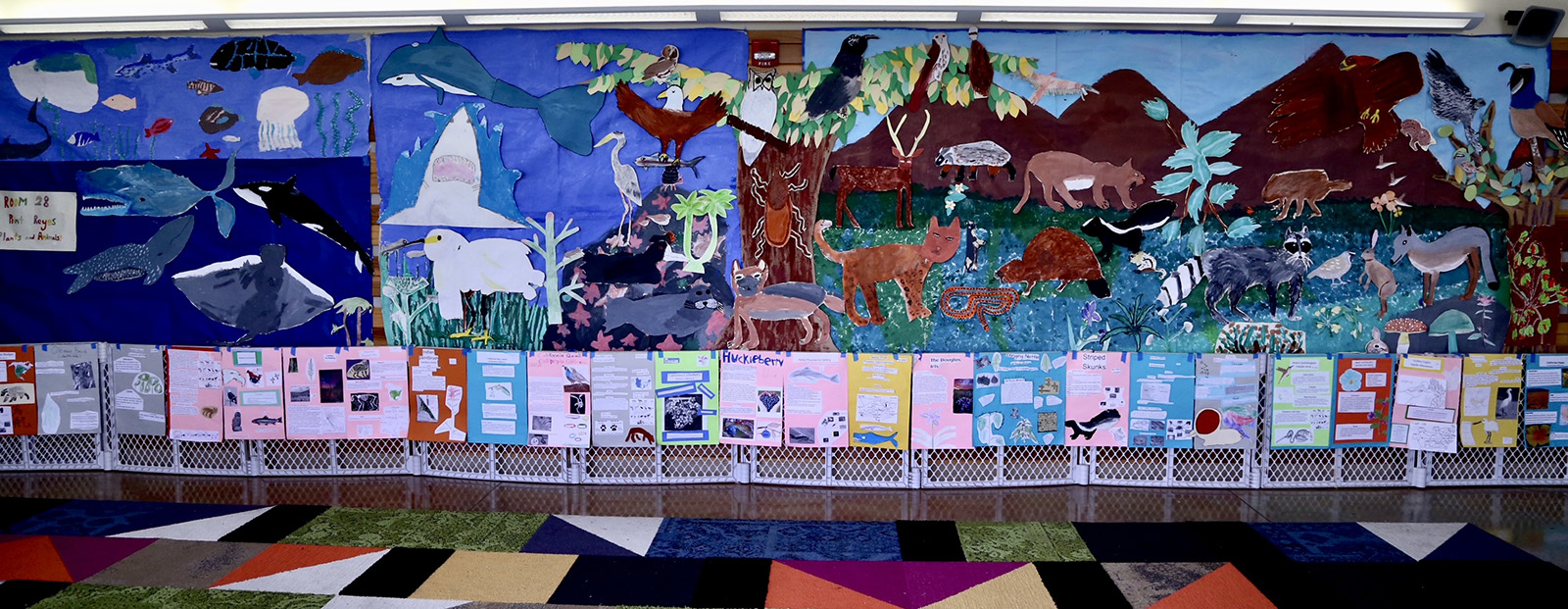 A view without the furniture.
A view without the furniture. Including the globe repainted each year by another class.
Including the globe repainted each year by another class.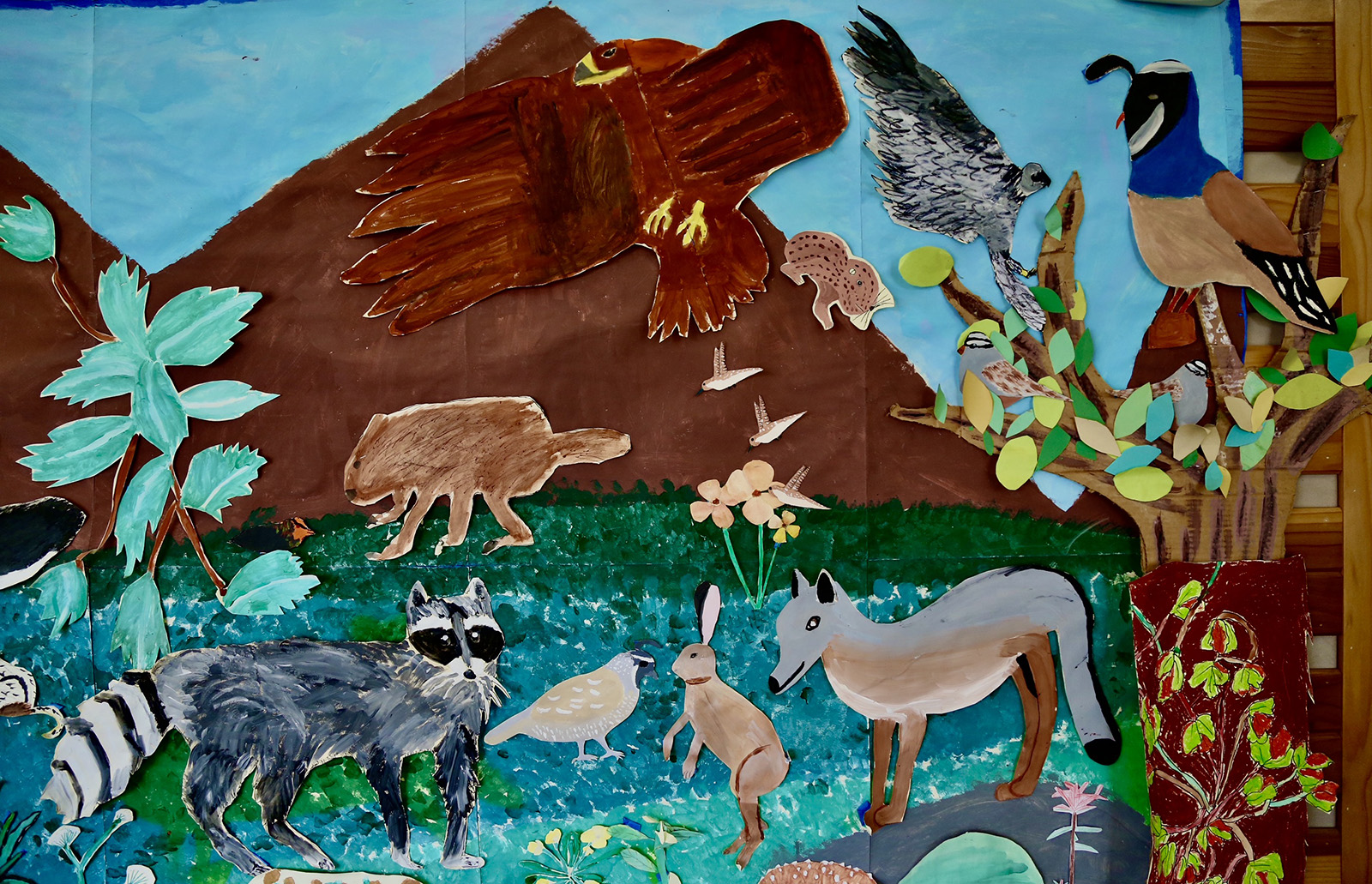 We again worked with the district art teacher to create 2-D animal and plant models.
We again worked with the district art teacher to create 2-D animal and plant models.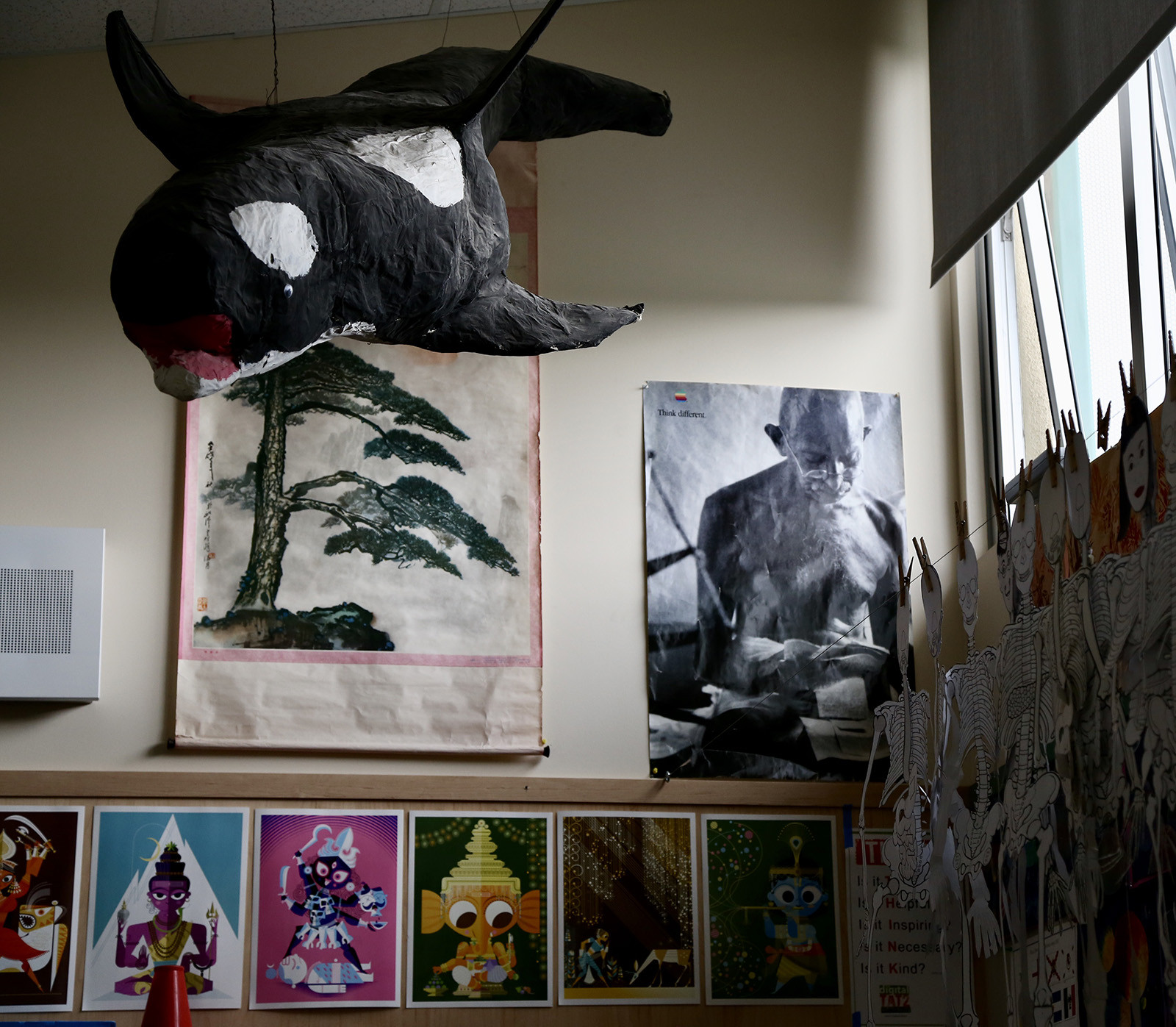 Some models also found permanent homes in the classroom.
Some models also found permanent homes in the classroom. In addition to docent tours, the mural and posters existed as an art/science exhibition for an extended period of time, and was refreshed with each new class of students.
In addition to docent tours, the mural and posters existed as an art/science exhibition for an extended period of time, and was refreshed with each new class of students.
